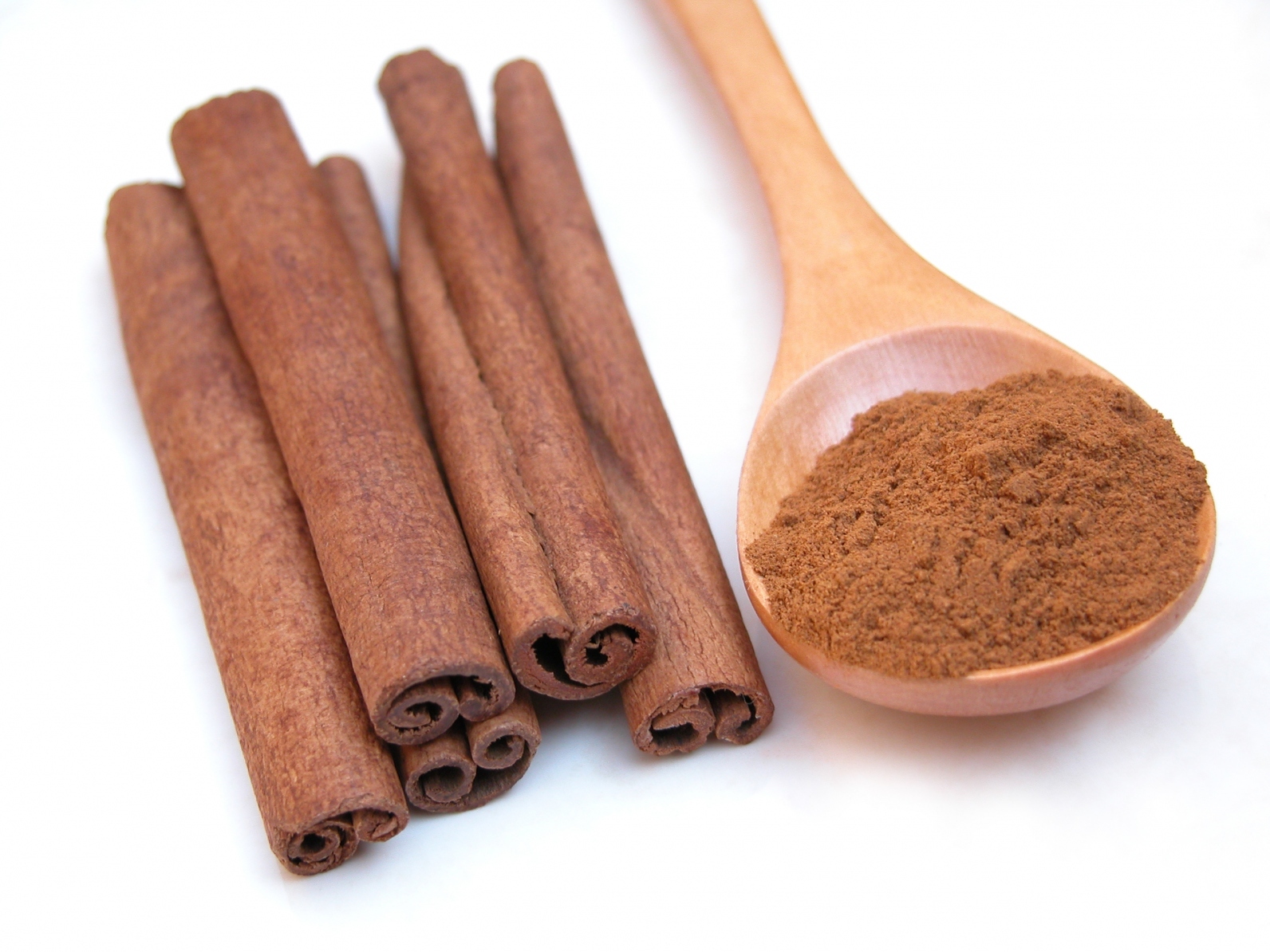
Cinnamonum zeylanicum (Blume)
Synonyms: cinnamon bark, Ceylon cinnamon
Order: Lauraceae
Description: A bushy tropical evergreen tree native to Sri Lanka but also cultivated in South-East Asia, South America and the West Indies. It can reach a height of 10 metres, and has thick scabrous bark. The young shoots are speckled greenish-orange. The leaves are petiolate, entire, leathery when mature, upper side shiny green, underside lighter. The flowers occur in small white in panicles; the fruit is an oval berry rather like an acorn in its receptacle, and is bluish with white spots when ripe.

Parts used: Dried inner bark of the shoots; oil distilled from the bark and leaves.
Collection: Collected commercially throughout the tropics and harvested during the rainy season. The shoots are peeled, then rubbed to loosen the inner bark. The peels are telescoped into one another to form quills which are then dried.
Constituents: up to 10% volatile oils (including cinnamaldehyde, eugenol and phellandrene); condensed tannins, mucilage, gum, sugars, coumarins.
Actions: carminative, astringent, aromatic, local stimulant, antiseptic, spasmolytic, orexigenic, antidiarrhoeal, antimicrobial, refrigerant, anthelmintic, gentle warming digestive tonic.
Indications: dyspepsia, flatulence, nausea, diarrhoea
Therapeutics and Pharmacology: Cinammonum is predominantly used as a carminative addition to herbal prescriptions. It is used in flatulent dyspepsia, dyspepsia with nausea, intestinal colic and digestive atony associated with cold and debilitated conditions. It relieves nausea and vomiting, and, because of its mild astringency, it is particularly useful in infantile diarrhoea. It is frequentlu used in the treatment of candidia albicans overgrowth. Cinnamaldehyde is hypotensive and spasmolytic and increases peripheral blood flow. The essential oil is a potent antibacterial, antifungal and uterine stimulant.
Caution: Therapeutic doses, particularly of the essential oil, should be avoided in pregnancy as Cinnamonum is a potential uterine stimulant. It should be used with care in feverish conditions.
Combinations: Combines well with Filipendula, Chamaemelum, Ulmus and Althaea root in flatulent dyspepsia and gastritis. It may also be combined with Geranium, Quercus, Acorus and Acacia in diarrhoea with colic, or with Sambucus, Mentha piperata and Achillea in influenza.
Preparation and dosage: (thrice daily)
Regulatory Status: GSL
The bark, usually powdered, may be freely used in mixtures or by itself to flavour teas.
Decoction: use for chronic diarrhoea.
Liquid extract: 1:1 in 70% alcohol, 0.5-1ml.
Tincture: 2-4ml in a little hot water for colds and chills.
Inhalation: dissolve 5 drops of essential oil in boiling water for coughs and respiratory irritation.
Massage oil: dilute 10ml cinnamon oil in 25ml almond or sunflower oil and use for abdominal colic, stomach chills or diarrhoea.
Additional Comments: Pliny wrote in A.D.77 '...there is a tale of cinnamon growing around marshes under the protection of a terrible kind of bats...invented by the natives to raise the price'. Cinnamon is a native of Ceylon, and was first recorded in 1275 in a work by the Arab writer Kazwini. The Chinese use both the bark (rou gui) and the twigs (gui zhi) of their native variety, C.cassia. Traditionally, the bark was believed best for the torso, the twigs for the fingers and toes. Research has highlighted hypoglycaemic properties, useful in diabetes. It is a key ingredient of mulled wine.Cinnamon is often used to flavour toothpastes, the eugenol being an effective breath-freshener.
Bibliography
BHMA 1983 British Herbal Pharmacopoeia, BHMA, Bournemouth.
Grieve, M. 1931 A Modern Herbal, (ed. C.F. Leyel 1985), London.
Hoffmann, D. 1990 The New Holistic Herbal, Second Edition, Element, Shaftesbury.
Mills, S.Y. 1993 The A-Z of Modern Herbalism, Diamond Books, London.
Ody, P. 1993 The Herb Society's Complete Medicinal Herbal, Dorling Kindersley, London.
Richardson, R. 1988 The Little Spice Book, Piatkus, Loughton.
Wild, A. 1995 The East India Company Book of Spices, Harper Collins, London.
Wren, R.C. 1988 Potter's New Cyclopaedia of Botanical Drugs and Preparations, C.W.Daniel, Saffron Walden.










